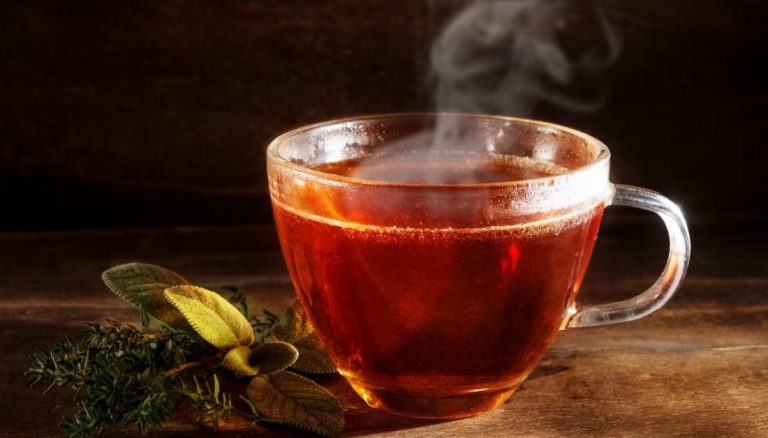
TEA
Tea is one of the most consumed non-alcoholic aromatic beverages.
It is prepared from the leaf bud and top leaves of a tropical evergreen bush called Camellia Sinesis. It produces what is regarded as a healthy beverage containing approximately only half the caffeine of coffee and at the same time, it aids muscle relaxation and stimulates the central nervous system.
Origin of tea
Tea was discovered by accident over 5000 years when leaves from a tea bush accidentally dropped into some boiling water and delicately flavored the drink. Tea was originally drunk for its medicinal benefits and it was not until the 1700’s that it began to be consumed as the delicious beverage that we know today.
Tea Producing Countries
Tea is grown in more than 25 countries around the world. The crop benefits from acidic soil and warm climate and where there is at least 130cm of rain a year. It is an annual crop and its flavor, quality, and character are affected by the location, altitude, type of soil and the climate.
The main tea producing countries are:
- India: It is the largest producer
- China
- Sri Lanka
- East Africa (Kenya, Zimbabwe, Tanzania)
- Indonesia
Blend
The word blend indicates that a named tea in the market is up for sale may be composed for a variety of tea to produce one marketable product acceptable to the average consumer’s palate, for eg. a standard tea may be a blend of Indian Tea for strength, African tea for color and Chinese tea for flavor and delicacy.
Storage
Tea should be stored in the following manner
- In a dry, cleaned and covered container
- In a well-ventilated area
- Away from excess moisture
- Must not be kept near any strong-smelling food as tea absorbs odor very quickly
Making of Tea
Tea is an infusion and thus maximum flavor is required from the brew. Few rules to be followed are-
- Ensure all equipment used are clean
- Heat the teapot before putting in the dry tea so that the maximum heat can be obtained from the brew
- Measure the dry tea and freshly drawn cold water exactly
- Use freshly boiled water
- Make sure that the water is boiling on entering the pot
- Allow it to brew for 3-4 minutes, to obtain maximum strength from the brew
- Remove the tea leaves at the end of this period if making in multi-pot insulated urns
Different Types of Tea and Style of tea Service
Indian or Ceylon blend:
It can be made in either china or metal teapots. Usually, both are offered with milk. Sugar would be offered separately.
China:
This is made from a special blend of tea which is more delicate in flavor and perfume than any other tea but lacks body. Less dry tea is required than for making Indian or Ceylon tea. It is made in the normal way and is best made in a china teapot. The addition of a slice of lemon improves flavor. Generally, china tea should not be served with milk but sugar may be offered.
Russian or lemon blend:
This may be brewed from a similar blend to china tea, but more often it is made from Indian or Ceylon tea. It is made in a normal way and served with a slice of lemon.
Iced Tea:
Make a strong tea and chill it well. This tea may be strained and stored chill till required.
Multi Pots:
On occasions like reception, tea breaks, etc tea is made well in advance.
Specialty Tea
Assam Tea:
It is rich and has a full malty flavor. Suitable for service at breakfast and is served with milk
Darjeeling Tea:
A delicate tea with grape flavor and known as the ‘Champagne of teas’. Usually served as an afternoon or evening tea with either lemon or little milk if preferred.
Earl Grey Tea:
A blend of Darjeeling and china tea, flavored with oil of bergamot. Usually served with lemon or milk.
Jasmine:
A green tea that is dried with jasmine. It blossoms and produces a tea that has a scented flavor.
Kenya tea:
This tea is referred to as” refreshing tea”. It is served with milk.
Lapsangsauchang:
It is smoky, pungent, perfumed tea. It is delicate to the palate and is said to have acquired taste and is served with lemon.
Tisanes:
It is a fruit-flavored tea and has herbal infusions. It is used for medicinal purposes and is gaining popularity since the trend is towards healthy eating and drinking. Often these so not contain caffeine.
Srilanka makes a pale golden tea with good flavor. Ceylon blend is still used as a trading name, served with lemon and milk.
CTC:
Machinery processed tea, usually from Assam, Sri Lanka and parts of Africa and South America. The processing has three stages (crush, tear, curl or cut, tear, curl), hence the name “CTC” tea. The resultant product looks like small pellets of (usually black) tea. It produces a very strongly flavored, quickly infusing tea that is often used in teabags.
Tea Brands:
Lipton
Tetley (Tata Global Beverages)
Twinings (Associated British Foods)
Dilmah
Madame Flavour
T2
Brooke Bond